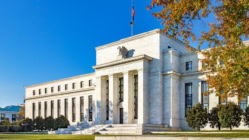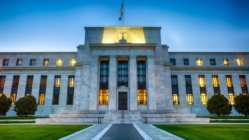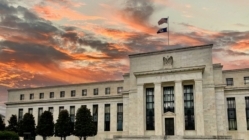Mortgage Rates Will Drop 2% On January 8, 2024! Or not, because nobody has a clue what will actually happen.
But – my subject line is one of the most common Google inquiries right now, so my Marketing Director asked me to blog about it to boost our SEO numbers.
SEO aside though, I promise to make this interesting!
Why I Was Wrong with Previous Predictions
I was wrong with my previous predictions, as I was quite certain rates would drop in May of this year and then again by July. My opinion was based largely on Barry Habib’s predictions as well as on those of macro analysts like Stephanie Pomboy and Jeff Snider.
Barry was very focused on specific inflation numbers, and he was right to some extent, and Stephanie was very focused on weak economic indicators – and she too was right. What neither took into account though was the enormous income effect of rising wages and more importantly, ALL of the stimulus funds in the economy. The stimulus included rent, mortgage, and student loan forbearances, as well as direct cash transfers via direct deposits from the government and such programs as the Paycheck Protection Program.
These programs put trillions into consumers’ pockets, and they spent it all – propping up the entire economy (and creating inflation).
Recession Coming for Sure
There is not going to be a soft landing (or no recession) as the Fed and many politicians want us to believe. A recession is a near certainty for the reasons I have explained many times in previous blogs, and we are likely already in a recession, as I will explain below.
Recessions are so important because they always result in lower interest rates.
In this blog from July, When Will The Recession Come?, I discuss how inverted yield curves (where short-term rates are higher than long-term rates) always predict recessions after a lag from the first inversion. Based on prior experience with Yield Curves, that blog predicted an October/November recession.
The other huge reason that analysts keep citing over and over as a reason for a pending recession is this: ALL of the stimulus funds have dried up and savings are back to pre-pandemic levels!
What the Macro Analysts Say
Stephanie Pomboy: In this Wealthion podcast, Count On A LOT Of Pain Before The Fed Pivots, Ms. Pomboy sets out her very strong case for a recession, but says that the Fed will not lower rates until we are in severe pain. This implies that rate reductions won’t come until next year.
David Rosenberg: In this Blockworks Macro podcast, A Recession Is Coming In The Next 6 Months, Mr. Rosenberg points out how we always see recessions after yield curves invert; how we are seeing many recessionary signs now, such as delinquent credit card and car payments, weaker retail sales and tighter bank lending standards; and how the stimulus funds impacted our economy previously (but have since dried up). Rosenberg says a recession will be here within 6 months.
Danielle DiMartino Booth: In this recent Wealthion podcast, ‘Perfect Storm’ Dead Ahead For Markets. Get Your Money To Safety, Ms. Booth makes a very strong case for a recession, focusing heavily on the “lag effects” of all the rate increases thus far and predicting lower rates in early 2024.
WE ARE IN A RECESSION NOW!
George Gammon: In this very short video, Recession Alert: Rarely Seen Fed Report Reveals A Bombshell, Gammon explains why we are clearly already IN a recession when you account for Gross Domestic Income (GDI) data, as opposed to just Gross Domestic Product (GDP) data.
Gray Swans Could Bring Down Rates Sooner
The analysts above all say or imply that we will not see significantly lower rates until next year. BUT – there are many Gray Swan Events that could bring rates down much sooner – no matter what the Fed does.
These events include an escalation in the Ukraine War; a major stock market crash in the U.S.; major bank or financial institution failures; or major financial crises in either Japan or China, as both countries are dealing with all kinds of extraordinarily severe issues primarily revolving around too much debt.
Note: September and October are traditionally the months when we see major crises for a variety of reasons. Examples are many, but they include Lehman’s famous collapse in 2008, as well as the 1929 and 1987 stock market crashes.
What About the Surging Stock Market?
The S&P 500 peaked in 2007, despite major warnings everywhere, right before the biggest recession ever. So, stock investors often get it wrong. It is the bond market we need to focus on for the best predictions of the future.
CONCLUSION: A recession was delayed due to stimulus, but it is coming, and rates will fall – sometime between October and Q1 of 2024.
Sign up to receive our blog daily
























